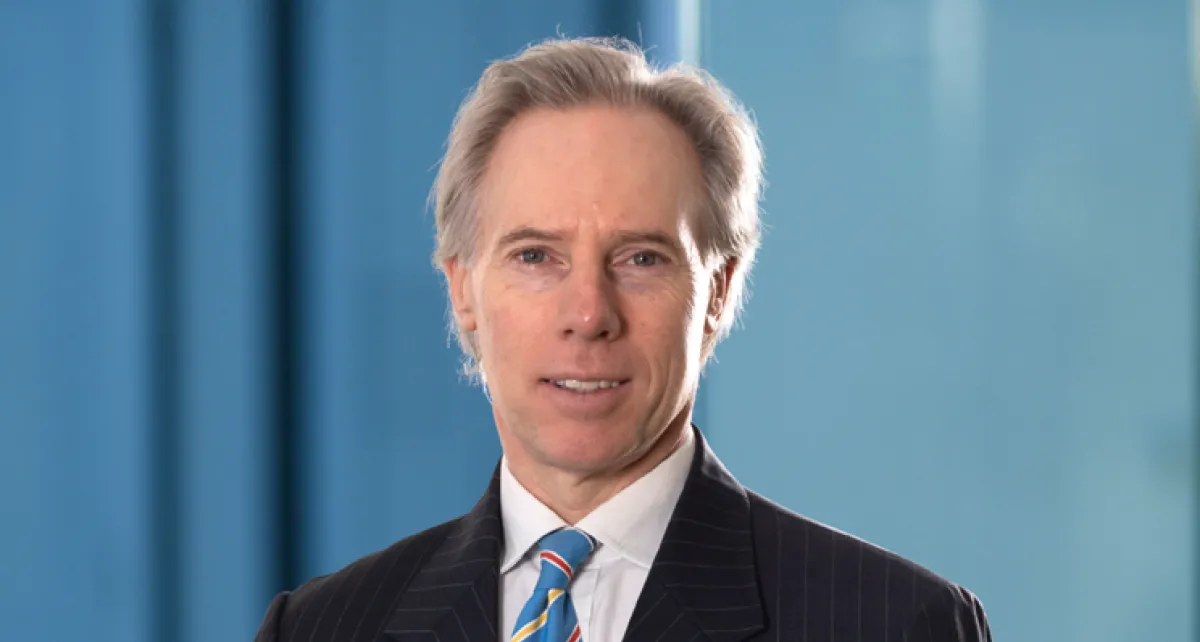
Guernsey capitalising on captive insurance expertise to become leader in longevity risk transfers
Guernsey is a leading jurisdiction for longevity swaps. Here, Carey Olsen corporate partner Christopher Anderson explains how the island has capitalised on its expertise in captive insurance to provide a solution for pension funds exposed to longevity risk.
In the last five years, a number of well-known pension funds have completed transactions worth in excess of £30 billion through captive insurers based in Guernsey – as set out below:
- BT (2014) - Value of £16 billion
- Merchant Navy Officers (2015) - Value of £1.5 billion
- British Airways (2017) - Value of £1.6 billion
- Marsh & McLennan UK (2017) - Value of £3.4 billion
- EU Industrial Conglomerate (2018) - Value of £2.3 billion
- Willis (2020) - Value of £1 billion
- Financial services firm A (2020) - Value in excess of £2 billion
- Financial services firm B (2020) - Value in excess of £2 billion
The end of 2020 was the busiest period so far with Carey Olsen advising on all three of the latest transactions as well as all five previous longevity swaps going back to 2014.
Why longevity swaps?
Pension funds that operate defined benefit schemes are exposed to longevity risk i.e. the risk that their pensioners live longer than predicted. Their exposure has been growing rapidly in recent years as life expectancy has increased - just one extra year of additional life expectancy can add 5% to a pension fund’s total liabilities. In today’s low-interest rate environment, pension trustees are finding it difficult to earn sufficient returns to compensate.
To protect against this risk, pension funds have traditionally purchased a bulk annuity policy from a specialist insurer. However, these can be expensive because:
- there are a small number of specialist insurers who offer bulk annuities; and
- the policy premium will include a profit margin for the insurer. Indeed, the cost of the policy will sometimes be greater than the value of the pension fund's liabilities.
For some pension funds, it is more cost effective to establish their own captive insurance company which insures the fund's longevity exposure and reinsures 100% of that risk into the life reinsurance market where pricing may be lower.
How are the swaps structured?
The pension fund pays a fixed premium to the captive in return for payments from the captive sufficient to cover the fund's liabilities to its pensioners. Similarly, the captive pays a fixed premium to the reinsurer in return for reinsurance of the risk it has assumed to the pension fund.
Each of the counterparties in the transaction is exposed to the credit risk of each of the others. For example, if the reinsurer becomes insolvent, the captive will not be paid and in turn will be unable to pay the pension fund. This risk is particularly important because of the long duration of the transaction. It can be decades before the pension liabilities are finally run off and the insurance and reinsurance can be terminated.
For this reason, an important element of a risk transfer transaction is to put in place security arrangements and collateral to ensure that the transaction can be unwound in the event of the failure of one of the counterparties. Typically, the parties will deposit assets in a collateral account with a custodian bank and those assets will be secured in support of the liabilities owed under the insurance and reinsurance agreements. The right to receive payments under the insurance and reinsurance agreements will also be assigned by way of security.
A match made in an actuary's spreadsheet
The life reinsurer can provide the pension fund with the security of a sizeable balance sheet and one big enough to assume a meaningful amount of risk from the fund. For the life reinsurer, writing longevity risk provides a natural hedge to the significant mortality risk to which many life reinsurers are exposed.
A captive-based solution can also be a stepping stone on the path to the pension fund purchasing a bulk annuity at a later date. The insurance contract written by the captive can easily be novated to a bulk annuity provider, enabling it to step in to the deal. The fact that the transaction already has reinsurance protection baked in makes these transactions attractive to bulk annuity providers. Carey Olsen has already advised on a number of novations out of captive longevity swaps.
Why Guernsey?
So how has Guernsey positioned itself as such a popular jurisdiction for longevity swaps? There are a number of reasons why, ranging from its highly regarded regulatory regime through to its long history in cell company and captive insurance innovation, which has in turn created a centre of excellence for handing these types of complex transactions.
Risk-based, proportionate regulation
Because the captive carries no underwriting risk and its credit risk is mitigated by the extensive collateral and security arrangements described above, it is subject to a lighter touch regulatory regime and consequently lower operating costs, i.e.:
- no solvency requirements;
- low minimum share capital (often around £100,000);
- no requirement to appoint a trustee to hold the captive's assets; and
- no requirement to appoint an actuary to annually report on its assets.
The captive will, however, be required to appoint a Guernsey auditor and provide to the Guernsey Financial Services Commission a copy of its audited accounts together with an annual return.
Cell companies
All of the longevity swaps completed to date, as well as those in progress, have utilised an incorporated cell (IC) of a Guernsey incorporated cell company (ICC). ICs are proving attractive in the context of longevity risk transfer for several reasons.
For a pension fund contemplating a number of swaps (perhaps for different schemes or different categories of pensioners), an ICC is a cost-effective way of establishing a group of special purpose insurers under common ownership. Once a pension fund has established an ICC and transacted a swap through its first IC, it can easily add additional ICs in order to accommodate further transactions.
An IC offers a variety of restructuring options. It can be transferred between ICCs, converted into a standalone company, amalgamated or migrated to other jurisdictions. This flexibility is very attractive in the context of a transaction that can subsist for a very long time, perhaps in excess of 60 years.
Several Guernsey insurance managers have established their own ICCs to facilitate longevity risk transfer transactions for their clients. Those managers can offer pension funds an IC in a ready-made and licensed ICC. Those ICCs may comprise a number of ICs owned by different pension funds, each of which is established to operate a single longevity risk transfer transaction. This structure can be cost-effective for pension trustees who are contemplating one-off or smaller transactions; and who therefore do not wish to establish their own ICC.
Management
Instead of employing staff, the captive, or cell, usually appoints an entirely non-executive board of directors (who will also direct the ICC) supported by a locally licensed insurance manager. The insurance manager provides administrative services and technical insurance support. It also provides a registered office address and acts as the IC’s general representative.
Board meetings are held in Guernsey and a majority of the directors are usually Guernsey residents in order to ensure that the mind, management and control of the IC remains at all times in Guernsey.
As the first jurisdiction in the world to introduce cell company legislation, Guernsey is home to a large number of cell companies. In consequence, there is an abundance of experience on-island in advising and managing these types of vehicles.
As cell shareholder, pension funds often express a desire to appoint a member of their senior management to the board of the IC. This is readily achievable where the pension fund has created its own ICC. In those circumstances Guernsey's proximity to the UK is of a huge benefit enabling that director to fly to Guernsey for meetings and return to the UK in the same day. This remains possible even during the current COVID-19 travel restrictions using Guernsey's business tunnel arrangement with the UK.
Where the pension fund rents a cell from an existing manager-owned ICC, it is not currently possible for the pension fund to appoint a director to the relevant cell. That is because the law underpinning Guernsey’s ICCs, currently requires all those persons who are directors of the ICC to also be the directors of each IC thereof. This restriction can sometimes be cumbersome, particularly for ICCs which house a number of ICs, each transacting with different pension funds.
In order to address this, it is anticipated that the law will be amended to permit the board of directors of each IC to differ from those on the ICC board and from those on other ICs. The changes are anticipated to be in force later this year – COVID-19 has had a direct impact on their implementation.
COVID-19 impact
The coronavirus pandemic has already had a significant, direct impact on mortality rates worldwide. That is not surprising. However, market commentators[1] suggest that its impact on longevity is less clear. That is because indirect effects of the virus could have a positive or negative effect on longevity.
Those indirect effects include the health of the surviving population and the economic, social and political consequences of the steps taken to tackle the virus.
As noted above, despite the uncertainty, Guernsey has continued to see significant growth in longevity swap transactions structured through Guernsey cell companies.
--------------------------
[1] https://www.aon.com/unitedkingdom/retirement-investment/COVID-19/Demogra...
An original version of this article was published by IFC Review, December 2020.
© Carey Olsen 2021.




